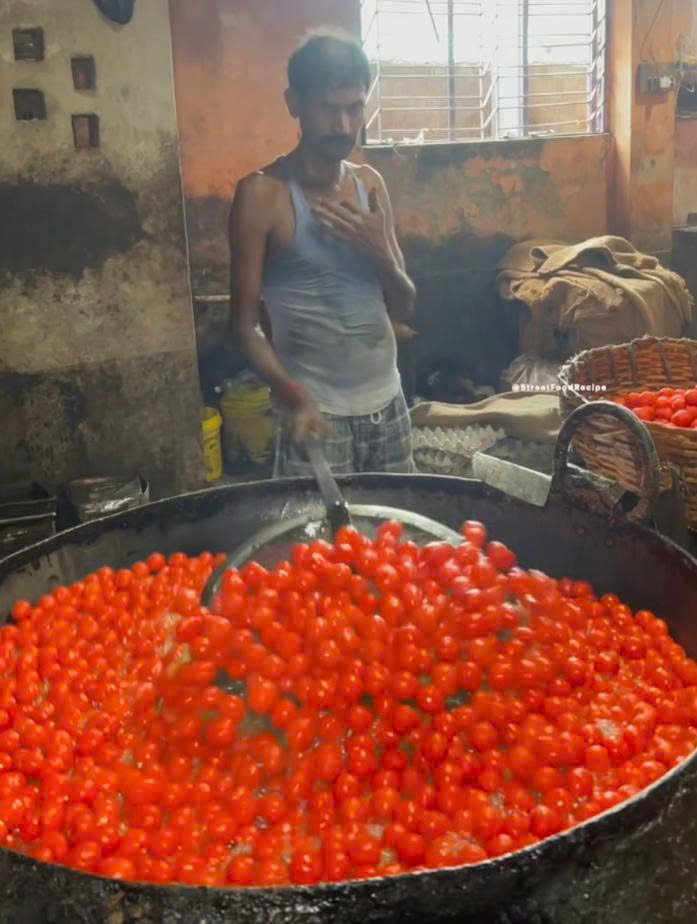Cooking the Indian Way: Tradition, Scale, and Cultural Identity

A viral photo from India recently captured worldwide attention: a man stirring a massive pan filled with bright red tomatoes, preparing food on an enormous scale. While the scene fascinated many, it also sparked a heated discussion. Some viewers criticized the setup, pointing out the lack of modern hygiene standards. Others, however, defended it as an authentic snapshot of Indian culture—an age-old way of cooking that has fed communities for centuries.
In India, cooking has always been more than the act of making meals—it is a social and cultural tradition. For centuries, food has been prepared in large batches for religious ceremonies, temple offerings, weddings, and festivals. In temples, especially in southern states like Tamil Nadu and Andhra Pradesh, massive kitchens cook daily meals for thousands of pilgrims. Similarly, in Sikh gurdwaras, volunteers prepare “langar”—free meals for anyone who comes, regardless of religion or background. The practice embodies values of equality, charity, and hospitality.
The method may look rustic: open fires, giant iron woks (kadhai), and cooks working in minimal facilities. Yet this approach has endured because it is practical for feeding large crowds. Instead of small, polished kitchens with stainless steel counters, these setups prioritize scale and efficiency. One person can stir hundreds of tomatoes, onions, or potatoes at once, creating enough curry to serve entire villages.
Of course, the debate around hygiene cannot be ignored. In the age of social media, when images spread instantly, many outside observers judge these kitchens by international standards. The absence of gloves, aprons, or sterile environments can be unsettling to some. But within India, the perspective is different. People see these meals as blessed, as part of a spiritual or cultural experience. The food is often considered “prasad” (sacred offering), which elevates it beyond simple nutrition.
Moreover, Indian cooking techniques themselves provide a level of natural protection. Spices like turmeric, chili, cumin, and coriander are not only flavor enhancers but also have antibacterial and preservative qualities. Cooking at extremely high temperatures in giant pans further kills harmful bacteria. In other words, tradition and practicality have evolved together to ensure safety in their own way.
But perhaps the most important aspect is the spirit of community behind these kitchens. The man in the viral photo is not simply cooking for profit—he is likely part of a team preparing food for an event, a temple service, or charitable distribution. In such contexts, food is seen as a gift to society. Sharing a meal cooked in these giant pots fosters a sense of togetherness that transcends class, caste, and wealth. For the poor, it may be the only full meal of the day; for others, it is a reminder of cultural roots.
To dismiss these cooking methods as “unhygienic” without understanding their cultural and historical context is to miss the larger picture. What the world sees as raw or messy, locals often see as pure, generous, and deeply human. It is cooking not only to fill the stomach but also to nourish community bonds and carry forward centuries-old traditions.
So whether one views the image as unsanitary or as a powerful cultural statement, it highlights an undeniable truth: food is never just about food. It is about history, identity, and the values of sharing that unite people around the world.